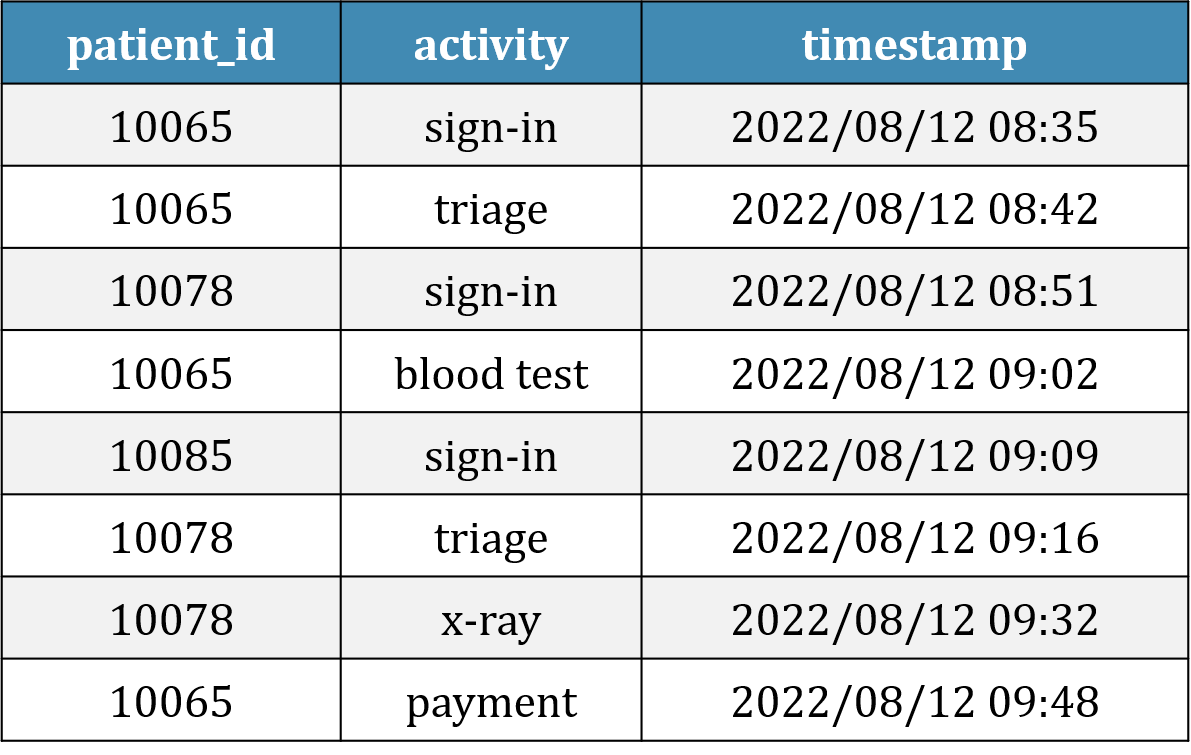Guide to Process Mining
What is Process Mining?
In Lean Six Sigma, we work to improve our business processes, and process mining helps with that goal. It involves mapping and analyzing our processes using event log data -- or data generated during the process. Since process mining is data-driven, it provides an objective view of the process -- rather than an opinion. The video below provides an introduction to process mining.
How It Works
In process mining, we start with process data -- or "event logs". The data explains who does what in the process and when. (For example, at a doctor's office, a patient received a chest x-ray at 3:50 on 5/3/2022.) That data is fed into a process mining tool that auto-generates a process map. We can then explore and drill-down into those process maps to generate insights and ideas for improving the process.

Process Data (Event Logs)
This is an example of a simple event log. To mine a process, we need three pieces of data: (1) a case ID, which, in this case, is a patient going to the doctor; (2) an activity; and (3) a timestamp. This explains the who, what, and when of the process. There could be additional fields, such as cost information, but that is optional.

Process Maps
Once we feed the event logs into our process mining tool, it auto-generates a process map. We can then play "detective" and drill-down and explore the process. While doing so, we may find the process is more complicated than we originally thought. We can also pinpoint and identify opportunities for improvement.

Tool Demonstration
There are a variety of process mining tools in the market. This video provide a sneak peak into Celonis, which is one of those tools. It looks at a pizza delivery process. We soon realize the complexity that exists in the process. It starts to look like a "spaghetti mess."
GET WHITE BELT CERTIFIED - FOR FREE!
Take time today to strengthen your resume. It only takes a few hours.
Start Now

